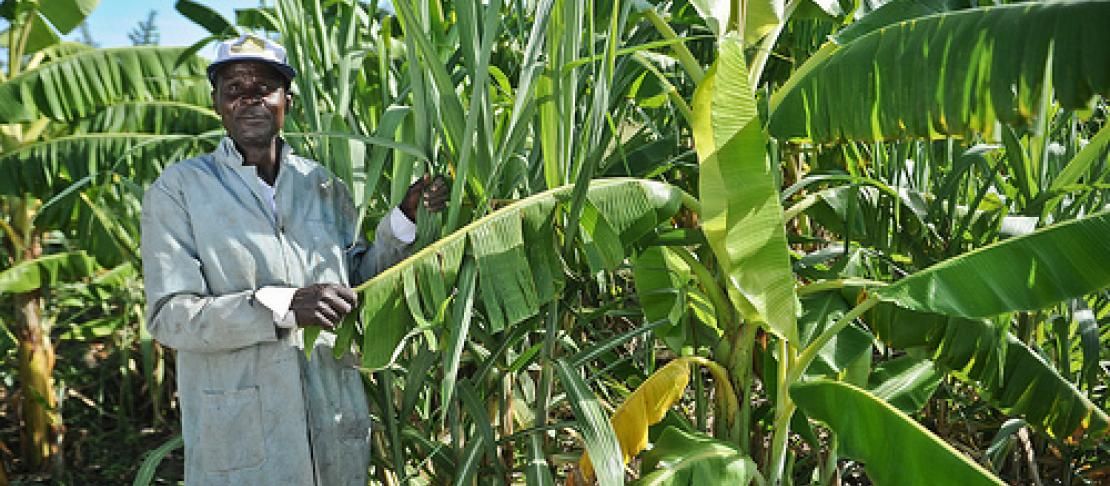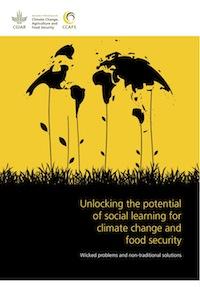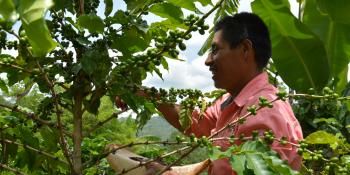Farmers and scientists: better together in the fight against climate change

We all know the challenges. How will we produce enough food to feed 9 billion people in the not-so-distant future, and not destroy the environment while doing so? So many more people to feed, escalating food and energy prices, water shortages, a changing climate. And the list goes on. What you don’t often hear is what can be done about it.
We need to see major changes in how food is grown and distributed. In Africa and Asia, where millions of families live on one to five hectares of land, we need to see improved farming systems. In fact, we need to see transformative changes, not small changes.
We need to see more people:
- Storing water
- Changing their crops
- Planting drought- and disease-tolerant seeds
- Improving management of soils and livestock
- Planting trees on farms
- Accessing improved markets
- Hearing about – and being able to use – scientific information
- and doing many more things in an integrated manner
But to transform food systems, we also need to transform how the research that supports these transformations is done. We need to think more about partnerships. And learning.
We saw scientists make a huge difference during the Green Revolution in parts of Asia. But one billion people in vulnerable regions have yet to benefit.
We need a new food systems revolution.
The good news is that this presents researchers with a huge opportunity. And with the global spread of cheap cell phones and increasing access to the internet, now is the time to act.
 We can be agents of transformative change, by helping farmers and other food system actors become to more resilient and to both mitigate and adapt to climate change.
We can be agents of transformative change, by helping farmers and other food system actors become to more resilient and to both mitigate and adapt to climate change.
But scientists and others will miss these opportunities if they follow a ‘business as usual’ approach.
But there are many examples of innovative, transformative approaches. In Vietnam, rice is now grown by over a million farmers using a new management system developed by researchers and farmers – men and women – innovating and learning together in farmer field schools supported by the government.
Together, they figured out how to reduce water use and methane gas emissions while generating higher incomes for farm families.
There is lots of evidence that the most successful agricultural research leading to significant changes includes farmers, herders, fishermen, women and other beneficiaries as project collaborators rather than recipients.
It takes an iterative learning approach. And these successful research approaches include pro-actively investing in capacity strengthening and innovative communication efforts.
Every agricultural researcher with experience in vulnerable countries knows that development isn’t just a matter of getting technologies off the shelf and into farmers and traders hands. There are no silver bullets. Different people in different settings do not have the same needs. Meeting these needs requires democratic participation, as well as joint research, experimentation and learning.
In another example, researchers working with agro-pastoralists in East Africa trained and worked closely with ‘community facilitator-researchers’.
These Maasai individuals effectively bridged the gap between the two very different worlds of research and action. Joint research informed and changed their practices, and their actions changed what the researchers studied. Even more importantly, they became a powerful force for social change in their communities and countries.
Other innovative studies catalyzed by international research institutes found that in rural communities in places like Ethiopia and India, peoples’ uptake of television, radio, cell phones and the internet can be harnessed to democratize research. They are trying new 'crowdsourcing' approaches to identify needs for different types of seeds and seedlings, and to make scientists much more responsive to the needs of different groups of people, especially women.
So how do we learn and help make transformative change happen? Agricultural scientists, like farmers, herders, and fishermen and fisherwomen, learn through design, experimentation, failure, reflection, engagement and dialogue. We know that knowledge links to action most effectively when those who will use the research findings are involved from the earliest stages of problem definition onwards. They need to co-create and ‘own’ the questions as well as the learning process that produces answers.
Its about the ‘who’ – the partnerships – as much as how you work together.
In another case, research teams created ‘Learning Alliances’ with food and commodity firms, farmer organizations and international NGOs. They took corporate executives on ‘learning journeys’ with small-scale farmers and learned firsthand about seasonal food insecurity. As a result, these executives supplied additional seed varieties much better suited to food-insecure periods and new research studies were jointly designed.
Many researchers and others are already forming such innovative partnerships.
This is not a new idea. But it is time galvanize action around this idea.
We can produce more relevant science that is seen as more credible and legitimate than ‘business as usual’ science. If we do so, we will be able to mobilize more investment in global food systems research. And much more investment is terribly needed.
The annual science meeting of the CGIAR Research Program on Climate Change, Agriculture and Food Security (CCAFS) taking place this week is focused on Achieving more impact through connecting, engaging and learning with communities and other key actors. The aim is to strengthen our collective understanding of this concept, and identify opportunities to form innovative partnerships and ensure the science is even more relevant and engaged in climate change and food security conversations and activities around the world.
Our mission is clear: to unleash this potential for more transformative change, incentives and institutions, and to do that, the rules of the game have to change also. This includes how research is planned, evaluated and funded. We need much longer time horizons than the 2–3–year projects that are the norm.
We have to fully embrace open access principles and share our knowledge much more widely, efficiently and quickly than we have in the past. And we need to widely share the valuable lessons we have been learning about how together we can make research make more of a difference to vulnerable people and environments.
The CCAFS Climate Change and Social Learning initiative is championed by researchers from across the CGIAR, in an open partnership with other champions of learning for change, currently including Prolinnova, IIED, IDS, and CARE.
Learn more about this work at http://ccsl.wikispaces.com
Follow latest updates from our meeting on twitter #2013CCSL



